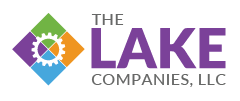Process Improvement – Harvesting the Most Out of Your Existing Resources

Leverage Your Existing Manufacturing Assets Without Spending More
Whether your organization is operating on the Agile Methodology, Lean Manufacturing, Six Sigma, Kaizen, Just-In-Time, or another business methodology – there is one thing we hear consistently from all of our manufacturing clients, there is always room for improvement.
What is process improvement? Process improvement, also called Business Process Improvement (BPI) or Continuous Improvement Process (CIP), is the practice of optimizing existing business processes to meet or exceed the current industry standards resulting in an improved customer experience.
How is this done, you ask? Process improvement aims to identify, analyze, and improve workflows throughout an organization. Processes can either be implemented, modified, complemented with sub-processes, or eliminated for the ultimate goal of improvement (ex. maintaining staffing, improving productivity, reducing costs, better quality).
Positioning Your Process Improvement Projects & Organization for Success
In today’s competitive manufacturing environment, it is more important than ever to harness the power of good processes. Even experts acknowledge that common mistakes can derail any process improvement project.
After decades of working with manufacturers to implement ERP solutions, here are the consistent takeaways we see for successful manufacturing processes:
- Make it easy – far too often, organizations let their detailed expertise in a certain field or area distract from the ultimate end goal (creating efficiencies, reducing costs, better customer service, etc.) By simplifying processes and creating fewer barriers, it ensures your entire organization can sustainably implement the new process to achieve the desired outcome.
- Make advancements – the result of better processes should be a product that is: easier for customers to use, lasts longer, enhanced features, better quality, improved technology, more aesthetically pleasing, and/or faster ship times.
- Create white space –through the implementation of better processes and creating efficiencies, your people should see a better workflow resulting in more time in their workday to focus on the tasks that matter. As the 2020s have proven to be a challenge for many organizations to find and retain top talent – this is a crucial piece of the process improvement puzzle.
- Find cost savings – by streamlining your processes, you will find cost savings in parts inventory, production, labor costs, supply chain, materials, and error reduction. It is important to achieve these cost savings through implementing better processes rather than creating a cheaper or less satisfactory product.
The Power of Manufacturing Processes in the Real World
In our blog series on Wisconsin manufacturer Fox Valley Tool & Die (FVTD), we shared how FVTD managers noticed a lot of repeat issues in production despite their efforts to improve internal quality. After FVTD managers examined internal processes and spoke with the shop floor machinists about the issues, they found the problem in their paper-based processes. FVTD leveraged automation in The Lake Companies’ Shop-Trak application to provide their machine operators the vital information to perform their work with a high level of quality.
The automation made the process much simpler while freeing up machine and labor resources, that reduced material, labor, and machine costs on those jobs. With the information available to them right on the shop floor, FVTD created a scalable solution that has been harvesting value for the organization for 6 years, with no end in sight. What did the FVTD managers do with the new found capacity? They used it to grow revenue without increasing costs. This is a textbook example of process improvement made simple while creating long-term value for the company as well as for their customers.
Integrating Process Improvement and Technology
Adopting and improving your technology infrastructure is probably the fastest and easiest route to manufacturing process improvement. Innovation often leads to more accessible, advanced, efficient, and cost-effective outcomes.
The Lake Companies has been designing disruptive innovations for the growth and success of manufacturing businesses worldwide for nearly 40 years. Fox Valley Tool & Die is just one example of how the combination of our Shop-Trak and Doc-Trak solutions resulted in effective long-term process improvements for an entire organization.
If the goal of your manufacturing facility is to maximize the use of all your existing resources before spending any additional money on them – The Lake Companies team can help; contact us here.

